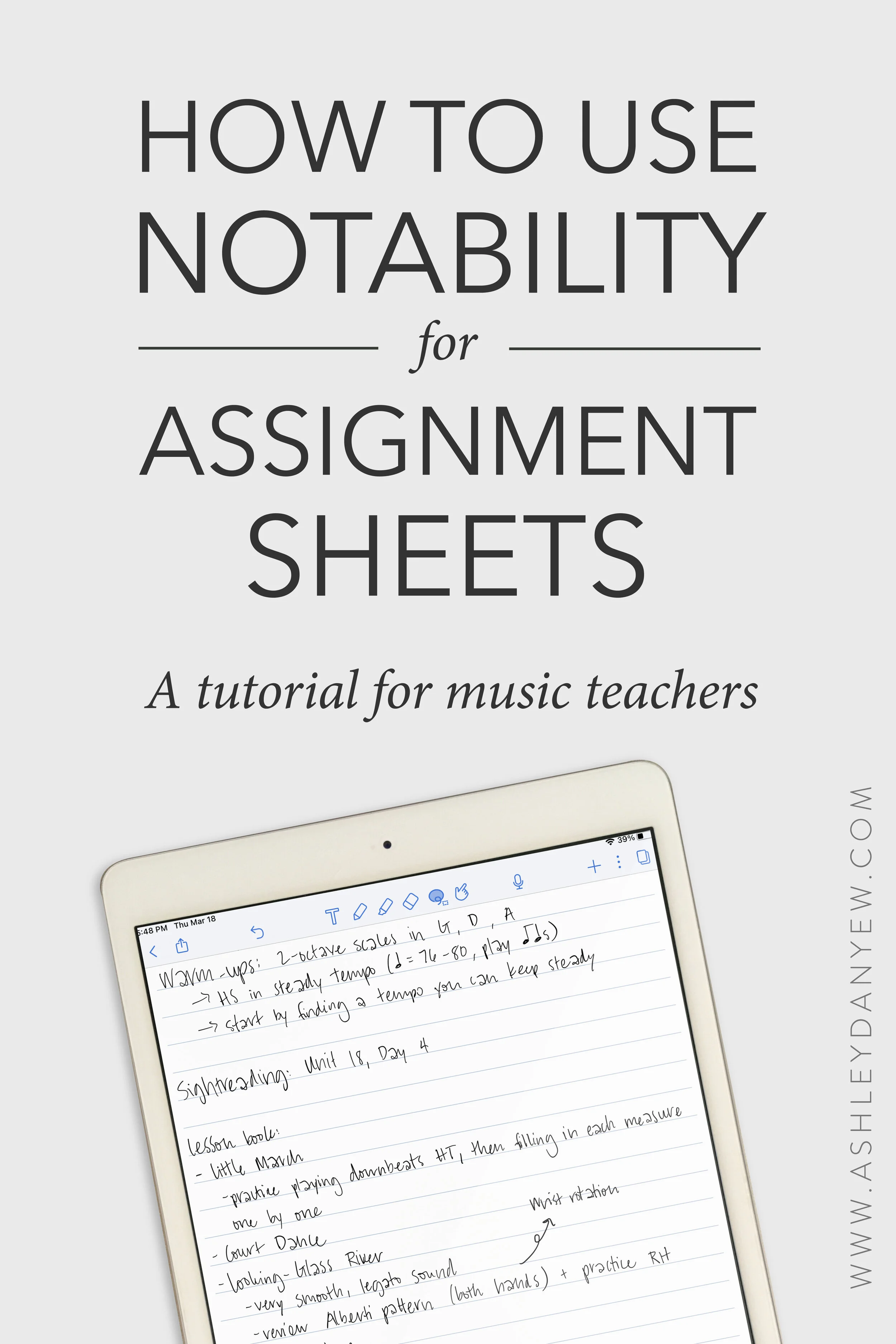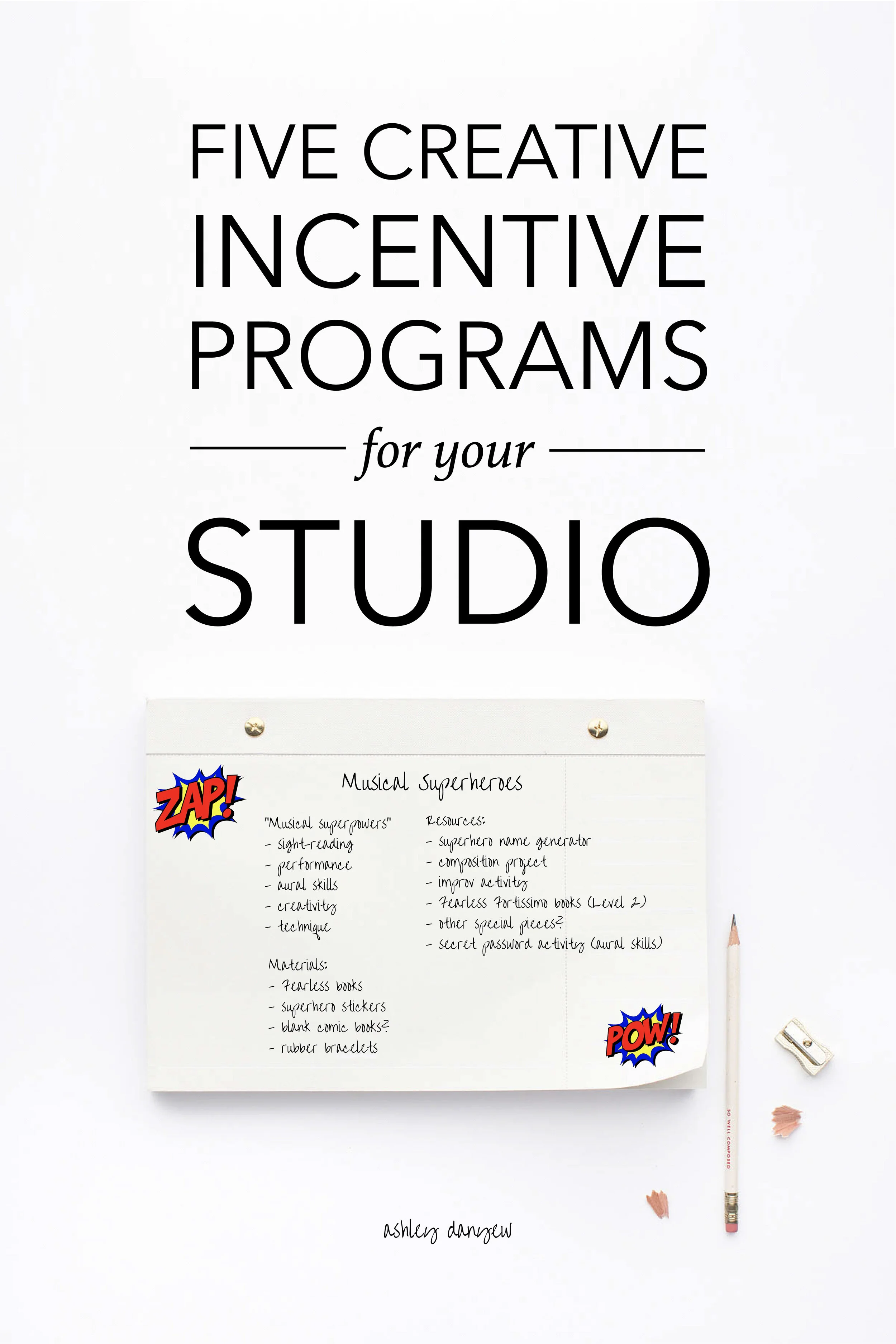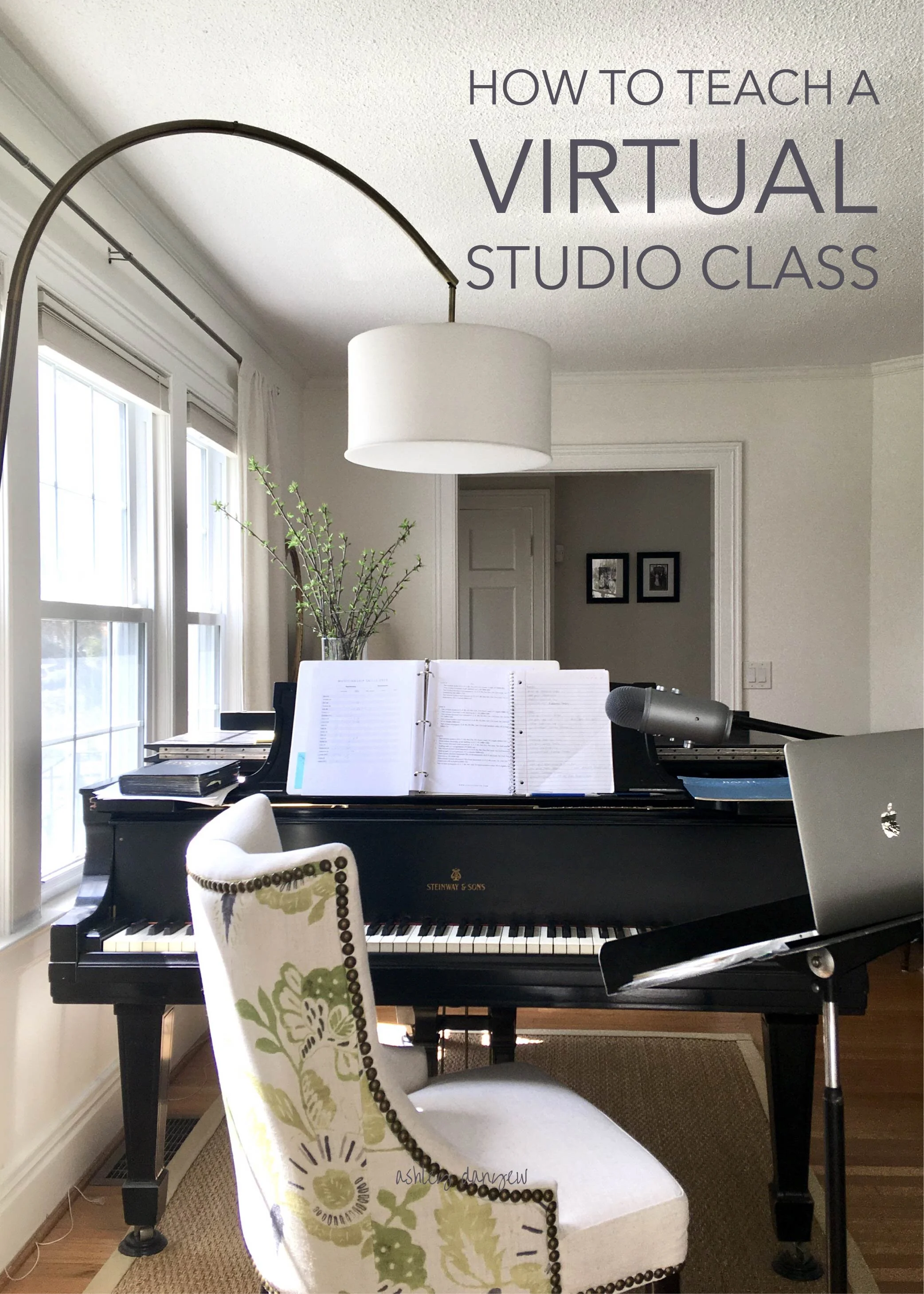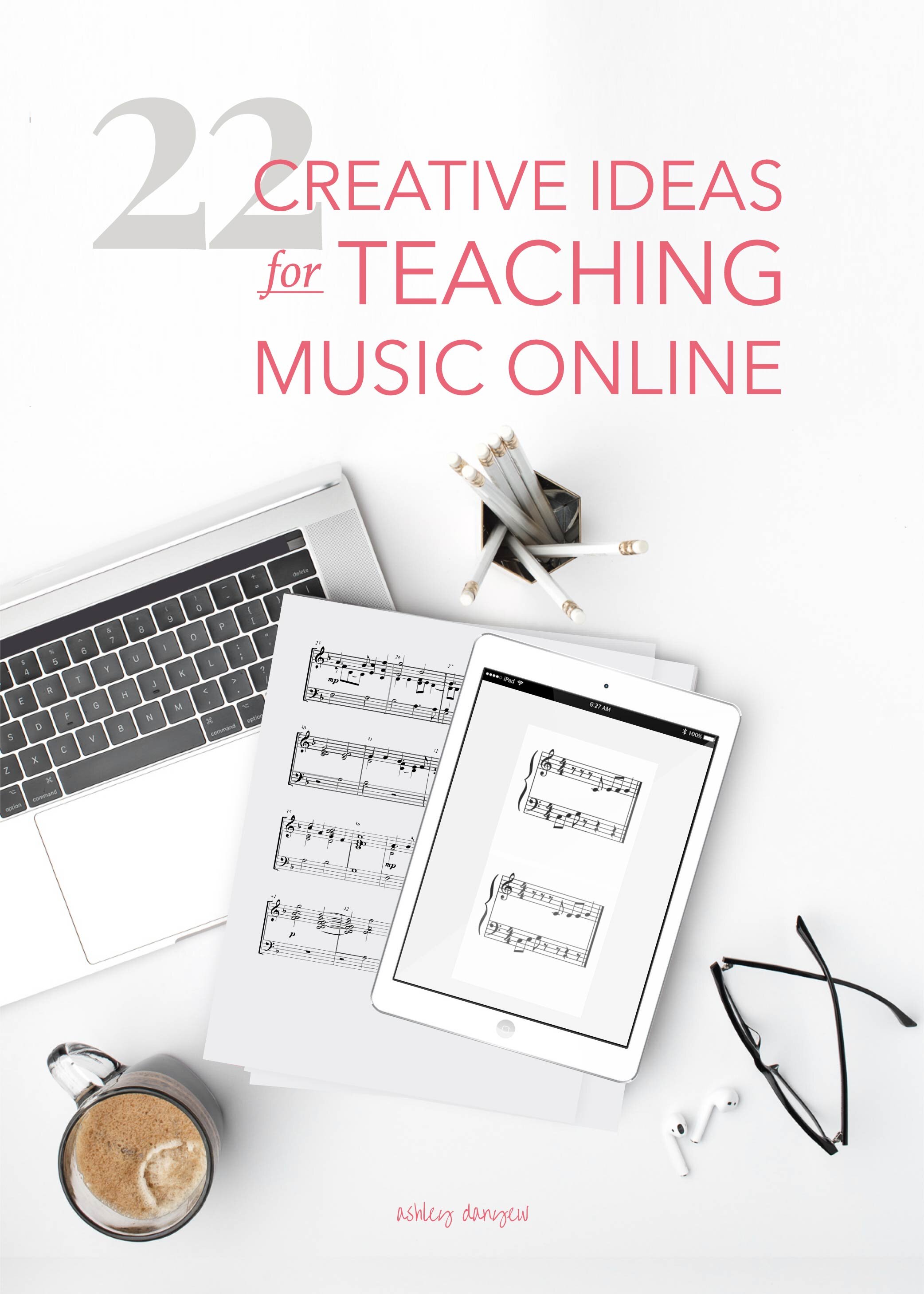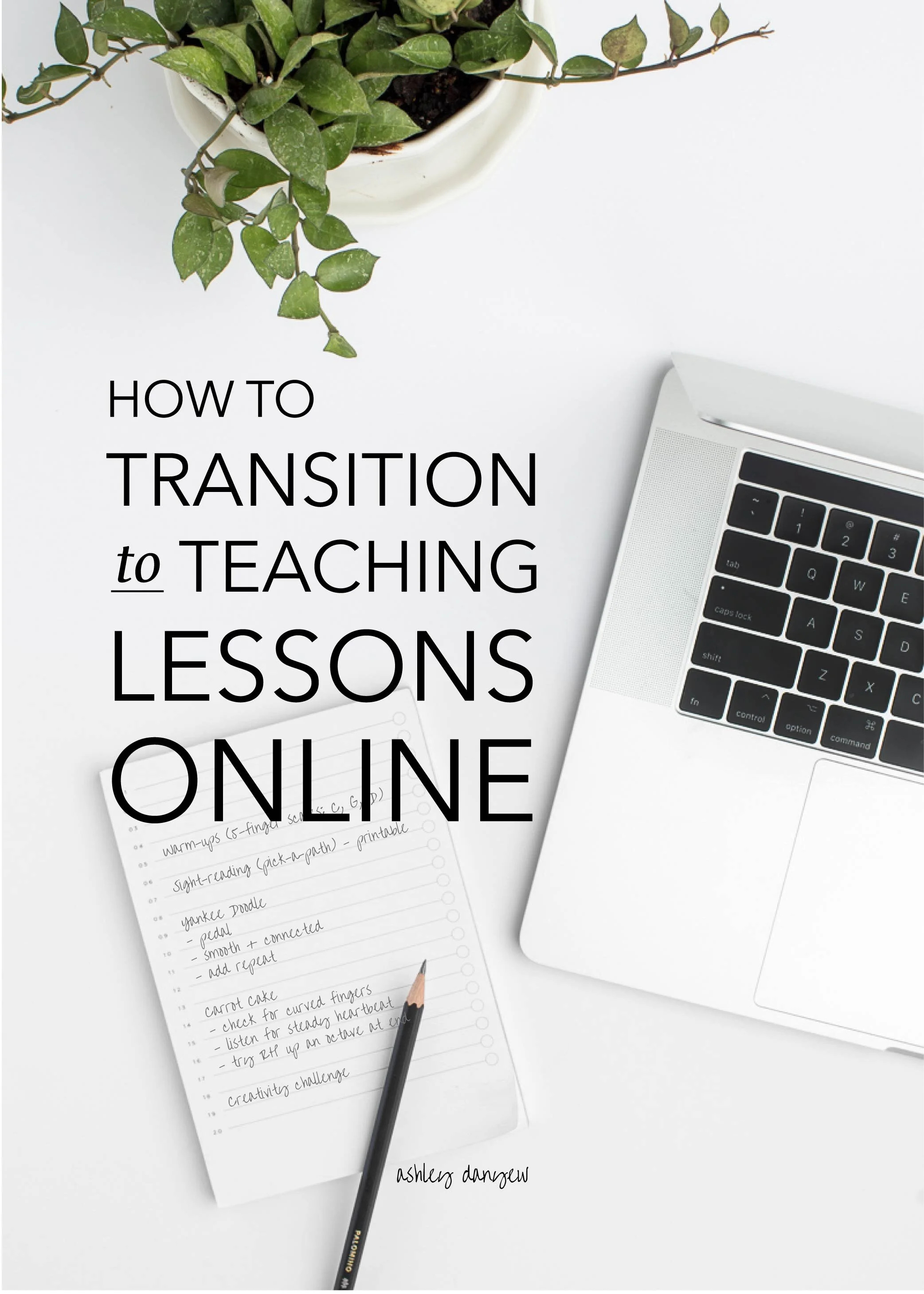Supplemental collections are a great way to 1) incorporate a variety of musical styles into their repertoire plan, 2) expose your students to new voices (especially those who are underrepresented), and 3) foster motivation. Here are 15 of my favorite collections for elementary piano students.
How to Use Milanote as a Music Educator
How to Use Notability for Assignment Sheets in Your Studio
Confession: I’ve always struggled with written assignment sheets.
I know they’re important for home practice, but what about when a student doesn’t take their assignment notebook out of their bag all week? I wanted to find a better solution.
Looking for an alternative to handwritten assignment sheets in your studio? Here’s an easy 5-step guide to using Notability.
Five Creative Incentive Programs for Your Studio
Have you ever used an incentive program in your music studio?
This might be a month-long practicing challenge, an annual assessment period, or a summer music camp (or other break-week).
This is a great way to keep momentum in the studio, encourage good practicing habits leading up to our end-of-year recital, and assess where my students are in all facets of their musicianship.
Looking for a fun, creative theme for your next studio incentive program? Here are five to consider.
How to Host an Online Piano Recital
Every year in my studio, we celebrate the end of the school year with a spring recital.
Each student prepares two pieces — sometimes memorized, sometimes with duets played by me or a parent or an older sibling or even a friend in the studio, and always with lots of supportive friends and family members in the audience.
This spring, like teachers around the world, I found myself suddenly immersed in the world of online teaching.
I knew that instead of gathering in person in the school theater on a Saturday morning in late May, we’d need to find another way to celebrate this year. We’d need to find a way to move the recital (like everything else in life) online.
How to Teach Music Lessons Online (+ Inside My Home Teaching Studio)
A few weeks ago, I made the decision to keep my studio virtual this year.
Some schools are reopening here (with lots of precautions, staggered starts, alternating live and virtual days, etc.), including the school where I normally teach. I spent a lot of time this summer thinking about the in-person lesson experience and what that might look like:
How to Teach a Virtual Studio Class
A few years ago, I started teaching monthly group classes in my studio.
The idea was to include more opportunities for informal performance, observation, musical discussion, and developing musicianship skills in a supportive group environment. All students are invited and encouraged to play something each time, even just part of a piece.
This gives us an opportunity to:
show works in progress
talk about practicing, learning processes, challenges, and rewards
give feedback (positive + constructive)
I also plan a few musical games and activities related to listening, movement, creative musicianship, and composition — things we can’t really do in our one-on-one lessons.
This year, I planned to teach five studio classes specifically for 3rd-6th graders, two studio classes for 7th-12th graders, and monthly buddy lessons for my K-2nd grade students.
But what to do when the world shuts down and everything moves online?
Host a Zoom studio class, of course.
Last week, I taught two studio classes (3rd-6th grade and 7th-12th grade) and two buddy lessons (K-2nd grade). Here’s a behind-the-scenes look at how I set these up, how I structured our time together, and what activities I created to play virtually.
22 Creative Ideas for Teaching Music Online (for All Ages)
Like many of you, I’ve been thinking a lot about how to teach music creatively online these past few weeks.
What tools work best to facilitate connection, dialogue, and musical experience?
What strategies lend themselves best to online teaching?
What assignments will foster music-learning during this time?
As many of us are navigating this new territory of learning how to teach online due to the COVID-19 pandemic, I thought I’d put together a master list of ideas for teaching in a variety of settings: church music, community teaching, and K-12 music.
I’m also including a list of tech tools that I’m using personally, have used in the past, or have heard recommended from other music teachers in the field.
How to Transition to Teaching Lessons Online (Due to COVID-19)
We’re living in unprecedented times.
With the recent worldwide outbreak of COVID-19, more and more schools and studios are choosing to close and transition to remote learning.
Maybe you’re like me in thinking that some subjects lend themselves well to being taught online: history, language, math. But music? How do you teaching piano to a 1st grader online? How do you teach choir or band? How do you teach group lessons?
This week, numerous music educators have put together resources, kits, and teaching guides to help others transition to online learning, learn about tools that are available, and get ideas. There are Facebook groups and webinars, blog posts and Google Docs summarizing all the music-related tech tools that are offering special discounts right now.
Here in Rochester, NY, schools are closed and moving online until further notice.
As such, I’m transitioning my studio to online learning. Today, I want to share what that looks like, including:
The notes I’m sending home to parents
Three models for online education I’m offering to all my students (K-10th grade)
Steps I’m taking to plan and prepare for this change
Resources and printables I’m pulling together for the next few weeks
Tools I’m using on the tech side of things
My best recommendations for studio teachers in this situation
Five Teaching & Learning Myths to Debunk This Year
You know those things you’ve heard that seem true? I mean, they sound plausible. Plus, if enough people say it, it must be true, right?
Before long, we find ourselves buying into the hype, retelling the story, believing something we’ve heard without stopping to ask questions.
This is how myths begin.
Sometimes, there’s simply a lack of information—nothing to disprove this theory or that idea. Other times, they sound good on paper but are only surface-level with no substance to back them up.
Whatever the case may be, we’ve all encountered myths (big and small) in various parts of our lives.
But have you ever stopped to think about myths related to teaching and learning? What stories are being told out there that affect our work and how we approach things? What’s being shared as fact when there isn’t research to back it up?



